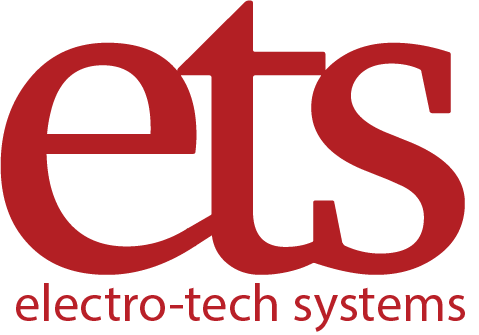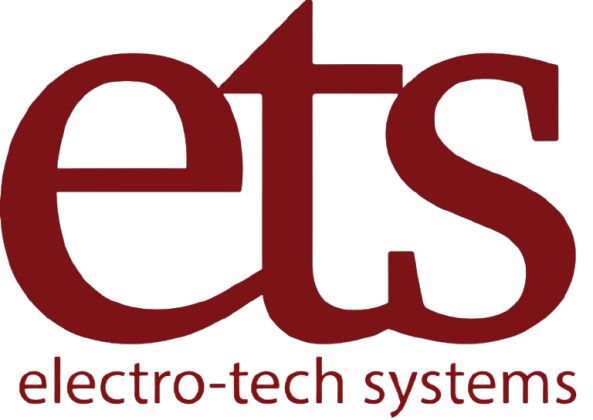Temperature and Humidity Controllers for Sensitive Electronics Testing
When testing sensitive electronics, such as semiconductors, circuit boards, sensor systems, or entire devices, a closely regulated environment is crucial. Temperature and humidity fluctuations can cause measurement errors, premature failures, and inaccurate performance assessments. That’s where temperature and humidity controllers come in: exactly what they sound like, but with features and precision tailored to demanding conditions.
Electro-Tech Systems (ETS) is a market leader in this category. Their environmental control systems, gloveboxes, chambers, and controllers are designed to provide the consistent, repeatable conditions demanded by industries such as electronics, aircraft, and pharmaceuticals.
Why Controllers Matter in Electronics Testing?
Environmental conditions have a wide range of effects on sensitive electronics. Key reasons for using precise controllers include:
- Preventing moisture damage: High humidity can lead to condensation, corrosion, short circuits, mold growth, and other moisture-related problems.
- Avoiding electrostatic discharge (ESD) concerns: Low humidity levels increase the risk of static accumulation, while high levels can interfere with insulation and cause leakage or partial discharge.
- Dimensional stability and thermal drift: Materials expand and contract in response to temperature, while sensors and circuits can wander, affecting calibration and readings.
- Reliability and accelerated life testing: Many environmental tests imitate severe temperatures and humidity to ensure that components can withstand real-world conditions.
Key characteristics of high-quality temperature and humidity controllers
When selecting a controller (or a system that contains one), the following are the critical attributes to consider:
-
Accuracy and stability
Controllers must keep setpoints within tight tolerances. Drift, overshoot, and undershoot all diminish the validity of test results.
-
Range and Resolution
The system should cover the temperature and humidity ranges that you require, both high and low. Furthermore, excellent resolution for both parameters is required such that minor changes are meaningful.
-
Response Time and Uniformity
How quickly the system responds to changes, and how consistent the environment is (minimum gradients within the chamber or glovebox).
-
Sensor Quality and Placement
Good-quality sensors (humidity, temperature, and possibly dew point) that have been correctly calibrated; numerous sensors are generally used to maintain uniformity.
-
Control Algorithm and User Interface
PID controllers or more complex control loops, user-friendly interfaces (touch screens, software, setpoint programming), and alerts/alarms.
-
Data Logging and Traceability
Testing frequently necessitates logging environmental conditions throughout time as verification of compliance or for post-mortem study. Systems having built-in or add-on data logging capabilities are preferable.
-
Durable Construction and Materials
Chambers/gloveboxes must be made of materials that withstand corrosion, thermal shock, and moisture damage; seals must be trustworthy; and components must be easily accessible for maintenance.
-
Customization and Modularity
Sometimes off-the-shelf isn’t enough: you may require unique chamber sizes, specialist ports, or accessories. The ability to adjust is crucial.
-
Support, Calibration & Certification
The manufacturer should supply or facilitate calibration services, as well as meet standard standards (for example, ISO 17025). ETS, for example, is recognized for its calibration and testing services.
How Electro-Tech Systems (ETS) Implements Temperature and Humidity Controllers
Electro-Tech Systems provides a wide range of controllers and environmental control systems. Some of their main product lines and characteristics are:
Humidity and Temperature Controllers: ETS offers temperature and humidity control systems for a variety of test chambers and gloveboxes.
Gloveboxes and Controlled Environmental Chambers: The glovebox series (e.g., M-5504, M-5507) are chambers that allow users to operate test objects inside a transparent enclosure while maintaining carefully controlled environmental conditions. These gloveboxes can maintain a specific humidity and temperature for stability.
EnviroPro Controllers (M-5300 Series): These look to be advanced controllers with increased precision, data logging, potentially numerous control loops, and interface with ETS gloveboxes/enclosures. Systems like these are ideal for laboratories that conduct research or require repeatability.
Replacement Parts & Accessories: Because sensors, seals, and small components decay or become damaged over time, having access to high-quality replacement parts is vital for ensuring performance. ETS also offers this.
Testing and consultancy Services: ETS provides consultancy, material and product testing, and calibration services to labs and companies that do not have their own test chambers. This can be useful for validation, compliance, and developing new goods.
Typical Applications of Temperature and Humidity Controllers in Electronics Testing
To demonstrate why the features listed above are important, consider the following scenarios where such controllers are used:
- Semiconductor reliability testing entails subjecting chips and wafers to high temperature and high humidity or low temperature and low humidity cycles in order to detect flaws, electrical leakage, or delamination.
- Sensor calibration entails providing a consistent reference to examine the output of sensors (such as moisture sensors and pressure sensors) under known conditions.
- Component burn-in is the process of subjecting devices to stress (heat/humidity) in order to identify early failure points.
- Material testing is required because plastics, coatings, and adhesives degrade differently under different humidity and temperature conditions; moisture absorption, warping, and corrosion must all be tested.
- Packaging and shipping simulations replicate tropical (hot and humid) or arid (dry, hot) settings to see how electronics packaged for shipping will fare.
Choosing the Right Controller System for Your Needs
When selecting a temperature and humidity controller (or chamber system), consider the following decision process:
-
Define Your Needs
What temperature and humidity ranges are required? What are the tolerances (±X°C, ±Y% RH)? Is homogeneity important? How large is the thing you’ll be testing?
-
Determine the Use Case Frequency and Duration
Will you perform continuous cycles (24/7), or only occasional tests? These impacts depend on reliability, cooling/heating capacity, and maintenance requirements.
-
Budget and Total Cost of Ownership
It’s not only the original cost; consider maintenance, calibration, spare parts, energy expenditures, and possible downtime.
-
Space & Infrastructure
Chambers and gloveboxes are heavy, require power, and must be located in an area with sufficient environmental control (floor vibration, ambient temperature).
-
Compliance & Certifications
If your testing lab is required to comply with ISO, IEC, or other standards, ensure that the equipment and documents meet those requirements.
-
Support and Service
Prefer providers who offer installation, calibration, spare parts, and troubleshooting services. ETS is strong in this area.
Maintenance & Best Practices
Even the greatest controllers break down without proper maintenance. Here are the best strategies for maintaining performance:
- Routine Calibration: The regular calibration of sensors (temperature, humidity) with traceable standards.
- Seal and Gasket Inspections: Over time, door seals, glove interfaces, o-rings, and gasket surfaces deteriorate; replace as needed.
- Clean Sensors and Interiors: Dust, condensate, and corrosive substances can reduce sensor accuracy.
- Monitor and log environmental drift: Even with good controls, tiny drifts can occur; logging allows you to spot trends and react before problems arise.
- Preventive Maintenance: Fans, heaters, dehumidifiers, and air conditioners must be serviced. Replace filters and check electrical connections.
- Avoid Overloading: Do not add more thermal mass than the chamber was designed for, and avoid quick swings if the system is not designed for them to prevent overshoot or component stress.
Using ETS Temperature & Humidity Controllers in Practice
Consider the following use case: a company that manufactures sensors for outdoor applications has to test product performance in both high heat with high humidity (40°C / 90% RH) and low cold/low humidity (-20°C / 10% RH). They must alternate between these extremes, measure performance indicators, monitor condensation, and ensure materials do not degrade.
- They might select an ETS environmental chamber that can withstand those temperature and RH ranges.
- The M-5300 EnviroPro controller would enable them to create recipes for these cycles, log data, and verify that each cycle is repeatable.
- Sensors inside the chamber would be positioned to ensure consistency.
- Following testing, ETS’s calibration service may validate sensor data to ensure that any drift is accounted for.
Conclusion
Temperature and humidity controllers are essential instruments in industries that require dependability, precision, and safety. They ensure that your tests mirror real-world settings (or extremes), produce consistent results, and help you prevent costly mistakes.
Electro-Tech Systems is a leading provider of innovative environmental controllers, chambers, and gloveboxes, as well as testing, consulting, and calibration services. Whether you’re validating new electronics, doing failure analysis, or fulfilling standards compliance, carefully selecting, operating, and maintaining these controllers will pay off in terms of quality and consistency.
If you require an environmental control solution that is specific to your testing requirements, consider ETS’s product lines (controllers, gloveboxes, chambers) and consultancy services. With the proper setting, you may achieve accurate, repeatable, and dependable results every time.

